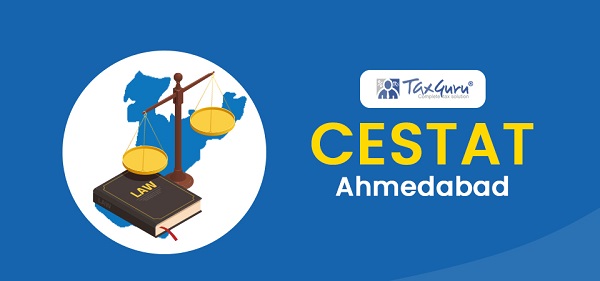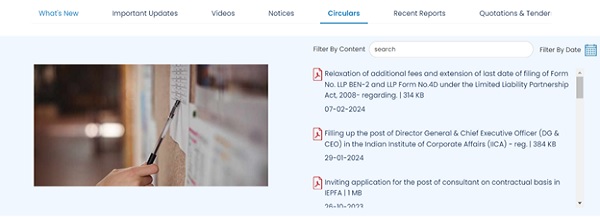Fast Track Mergers
The introduction of the concept of fast track mergers or FTMs has led to a significant change in the M&A landscape. Prior to the introduction of FTM vide section 233 and Rule 25 of Companies (Compromises, Arrangements and Amalgamations) Rules, 2016 there was one unified merger process for all companies. This process inter alia included approval of the merger scheme from the Tribunal. This led to delays and unnecessary complications.
What is fast track merger?
FTM is process which provides for a simplistic and convenient procedure for mergers between small companies and mergers between holding and subsidiary companies.
Need or Benefits of Fast track merger?
- The complexities of the earlier regime gave rise to the need for a simplified procedure and a more efficient legal regime for merger process to small company.
- Merger of holding and subsidiary companies does not pose any major market risk and hence get into merger process with simple regime.
- Form filings required also significantly reduced.
- No judicial approval required.
Legal Regime behind Fast Track Mergers
Section 233 of the Companies Act, 2013 has introduced the concept of fast track mergers. It carved out an exception from the regular merger procedure. It exempted small companies and holding and subsidiary companies entering into merger arrangements from the regular merger procedure as stipulated under sections 230-232 of the Companies Act, 2013
Section 233 of the Companies Act, 2013 along with Rule 25 of the Companies (Compromises, Arrangements and Amalgamations) Rules, 2016 lay down the entire legal framework of fast track mergers.
Applicability of Fast track merger:-
The scheme of fast track merger can be entered into by the following companies:
A.) Holding Company and its Wholly Owned Subsidiary Company
Companies of such description could be public, private or Section 8 companies. Holding companies desiring to merge with more than one of its wholly-owned subsidiaries are required to make more than one application for this purpose.
B.) Small Companies
Two or more small companies may form a merger between themselves. Section 2(85) of the Companies Act considers a company as small if:
- It is not a public company.
- Has a paid-up share capital of not more than INR 50 lakhs or such higher amount as may be prescribed (which shall not be more than INR 10 crores); or has a turnover (as per the profit and loss account of the immediately preceding financial year) of not more than INR 2 crores or such higher amount as may be prescribed (not more than INR 100 crores).
Note – the facility may also be adopted by other prescribed class/classes of companies.
Procedural Aspects of Fast Track Mergers
Section 233 of the Companies Act, 2013 along with the Companies (Compromises, Arrangements and Amalgamations) Rules, 2016 lay down the procedure for fast track mergers. The table given below explains the process, forms required and the stipulated timelines involved in a fast track merger:-
First of all, both the companies need to check their Articles of Association (AoA) and assess if they have the requisite authority under them to enter into a merger. If no, then the AoA need to be amended before such merger can take place.
And already, prepare a financial statement of assets and liabilities and get an auditor’s report prepared.
| Procedure | Timeline | Forms required | Who shall be required to comply |
| Convene a Board Meeting:
The board meeting shall approve the scheme and pass resolutions for holding and fixing date and time for a shareholder and a creditors meeting. |
NA | NA | Both the transferor and the transferee companies are required to comply |
| Notice of the Proposed Scheme:
The notice of the proposed scheme is to be sent to the Registrar of Companies (RoC) and Official Liquidator (OL) where registered offices of both the companies are situated. The notice shall invite objections/ suggestions, if any, from the respective registrars. |
To be done after the Board meeting. | Form CAA 9 With following attachment:-
|
Both the transferor and the transferee companies are required to comply |
| Declaration of solvency: Both the companies are required to file a declaration of solvency with the ROC of the place where their registered offices are situated. |
This is to be done before the meeting of shareholders or the meeting of creditors is convened. | Form CAA 10 with following attachment:-
|
Both the transferor and the transferee companies are required to comply |
| Convening a Meeting of Members:
A notice convening a meeting of the members or shareholders of the company should be sent to all the members. This notice should contain:-
Moreover, the scheme must be approved by the respective members/class of members who are holding 90% of the shares. As an alternative to such a meeting, written approval of the majority representing 90% of the total number of shares may be considered, without holding a meeting. |
Notice should be sent 21 days prior to the meeting. | NA | Both the transferor and the transferee companies are required to comply. |
| Convening a Meeting of Creditors: A notice convening a meeting of the creditors of the company should be sent to all the creditors. This notice should contain:-
The scheme is to be approved by a majority that is (9/10th value) nine-tenths in value of the creditors or class of creditors of the respective companies. |
Notice should be sent to the creditors 21 days before the meeting. | NA | Both the transferor and the transferee companies have to comply |
| Filing of the Scheme:
A copy of the scheme along with the results of all the meetings shall be filed with the regional director. A copy of the scheme along with Form CAA 11 is also required to be formed with the ROC and the Official Liquidator. The former shall be filed in Form GNL1 and the latter shall be hand-delivered or sent through speed post or registered post. |
Within 7 days of the meeting of creditors. | Form CAA 11 Form GNL 1 | Only transferee company is required to comply. |
| Approval of the Scheme by Regional Director:
If the ROC or the Official Liquidator approves the scheme then the regional director shall register the same and issue a confirmation. If the ROC or Official Liquidator has objections then they may communicate the same to the Regional Director. The Regional Director, if is of the opinion that the scheme is not in public interest then it may file an application in Form CAA 12 before the Tribunal, to consider the scheme under section 232 (regular merger process). If the Tribunal is of the opinion that the scheme should be considered under section 232 it should direct accordingly otherwise the scheme shall be approved. |
NA | NA | NA |
| Filing the confirmation order with the ROC:
A copy of the confirmation of the scheme approved by the ROC or the Official Liquidator should be sent to the Registrar where the transferee’s registered office is situated. The registrar shall register the scheme and issue a confirmation which shall then be filed with ROC of the place where the transferor’s registered office is situated. |
Within 30 days of the receipt of the confirmation of the scheme | Form INC28 | Both the transferor and the transferee companies are required to comply |
Contents include in a scheme of merger
However, from a practical standpoint, it is also imperative to know what are the ingredients / contents
One should include in a scheme of merger. These ingredients are:
- Preamble
- Definitions of the terms used in the scheme
- A detailing of the pre-merger and the post-merger capital
- The way the assets and liabilities shall be transferred
- Appointed and effective date of the scheme
- Tax treatment of the scheme
- Benefits to be given to the staff
- Consolidation of the authorised share capital
- Dissolution without resorting to winding-up
- Notice of approval of the scheme
- Any amendments or modifications to the scheme
Post-Merger Effect
The following consequences shall result out of the merger:
- The transferor company shall stand dissolved on the registration of the scheme. No winding-up shall be required for the same.
- All the assets and liabilities of the transferor company shall be transferred to the transferee company.
- Any charge on the transferor’s property shall stand transferred to the transferee.
- Payment of social security benefits of employees will now be the responsibility of the transferee company.
Practical Difficulties in fast track Merger Process
- Merging the authorised capital of all companies in the transferee company may not be practically viable.
- Form INC 28 which finally registers the scheme does not provide for the following:
- A separate drop-down menu for Section 233
- Change in the status of the transferor company
- There is doubt regarding whether the Regional Director can suggest changes to the scheme. It appears that if the ROC, Official Liquidator does not have objections to the scheme, the Regional Director has to confirm without any suggestions of his own.
DISCLAIMER: The entire contents of this article have been prepared on the basis of relevant provisions and as per the information existing at the time of the preparation. Although care has been taken to ensure the accuracy, completeness and reliability of the information provided, I assume no responsibility therefore. Users of this information are expected to refer to the relevant existing provisions of applicable Laws.























Would request you to share your contact details for discussion regarding the merger process